You are using an outdated browser. Please upgrade your browser to improve your experience.

How to Teach Creative Writing | 7 Steps to Get Students Wordsmithing

“I don’t have any ideas!”
“I can’t think of anything!”
While we see creative writing as a world of limitless imagination, our students often see an overwhelming desert of “no idea.”
But when you teach creative writing effectively, you’ll notice that every student is brimming over with ideas that just have to get out.
So what does teaching creative writing effectively look like?
We’ve outlined a seven-step method that will scaffold your students through each phase of the creative process from idea generation through to final edits.
7. Create inspiring and original prompts
Use the following formats to generate prompts that get students inspired:
- personal memories (“Write about a person who taught you an important lesson”)
- imaginative scenarios
- prompts based on a familiar mentor text (e.g. “Write an alternative ending to your favorite book”). These are especially useful for giving struggling students an easy starting point.
- lead-in sentences (“I looked in the mirror and I couldn’t believe my eyes. Somehow overnight I…”).
- fascinating or thought-provoking images with a directive (“Who do you think lives in this mountain cabin? Tell their story”).
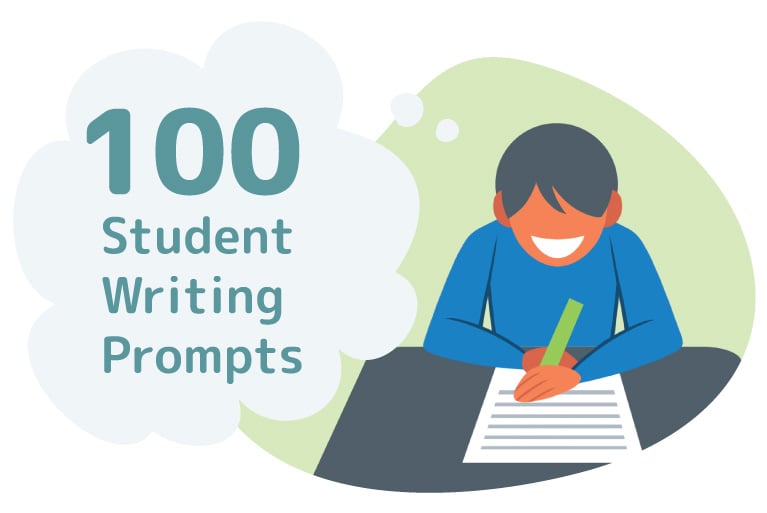
Don’t have the time or stuck for ideas? Check out our list of 100 student writing prompts
6. unpack the prompts together.
Explicitly teach your students how to dig deeper into the prompt for engaging and original ideas.
Probing questions are an effective strategy for digging into a prompt. Take this one for example:
“I looked in the mirror and I couldn’t believe my eyes. Somehow overnight I…”
Ask “What questions need answering here?” The first thing students will want to know is:
What happened overnight?
No doubt they’ll be able to come up with plenty of zany answers to that question, but there’s another one they could ask to make things much more interesting:
Who might “I” be?
In this way, you subtly push students to go beyond the obvious and into more original and thoughtful territory. It’s even more useful with a deep prompt:
“Write a story where the main character starts to question something they’ve always believed.”
Here students could ask:
- What sorts of beliefs do people take for granted?
- What might make us question those beliefs?
- What happens when we question something we’ve always thought is true?
- How do we feel when we discover that something isn’t true?
Try splitting students into groups, having each group come up with probing questions for a prompt, and then discussing potential “answers” to these questions as a class.
The most important lesson at this point should be that good ideas take time to generate. So don’t rush this step!
5. Warm-up for writing
A quick warm-up activity will:
- allow students to see what their discussed ideas look like on paper
- help fix the “I don’t know how to start” problem
- warm up writing muscles quite literally (especially important for young learners who are still developing handwriting and fine motor skills).
Freewriting is a particularly effective warm-up. Give students 5–10 minutes to “dump” all their ideas for a prompt onto the page for without worrying about structure, spelling, or grammar.
After about five minutes you’ll notice them starting to get into the groove, and when you call time, they’ll have a better idea of what captures their interest.
Did you know? The Story Factory in Reading Eggs allows your students to write and publish their own storybooks using an easy step-by-step guide.

4. Start planning
Now it’s time for students to piece all these raw ideas together and generate a plan. This will synthesize disjointed ideas and give them a roadmap for the writing process.
Note: at this stage your strong writers might be more than ready to get started on a creative piece. If so, let them go for it – use planning for students who are still puzzling things out.
Here are four ideas for planning:
Graphic organisers
A graphic organiser will allow your students to plan out the overall structure of their writing. They’re also particularly useful in “chunking” the writing process, so students don’t see it as one big wall of text.
Storyboards and illustrations
These will engage your artistically-minded students and give greater depth to settings and characters. Just make sure that drawing doesn’t overshadow the writing process.
Voice recordings
If you have students who are hesitant to commit words to paper, tell them to think out loud and record it on their device. Often they’ll be surprised at how well their spoken words translate to the page.
Write a blurb
This takes a bit more explicit teaching, but it gets students to concisely summarize all their main ideas (without giving away spoilers). Look at some blurbs on the back of published books before getting them to write their own. Afterward they could test it out on a friend – based on the blurb, would they borrow it from the library?
3. Produce rough drafts
Warmed up and with a plan at the ready, your students are now ready to start wordsmithing. But before they start on a draft, remind them of what a draft is supposed to be:
- a work in progress.
Remind them that if they wait for the perfect words to come, they’ll end up with blank pages .
Instead, it’s time to take some writing risks and get messy. Encourage this by:
- demonstrating the writing process to students yourself
- taking the focus off spelling and grammar (during the drafting stage)
- providing meaningful and in-depth feedback (using words, not ticks!).

Reading Eggs also gives you access to an ever-expanding collection of over 3,500 online books!
2. share drafts for peer feedback.
Don’t saddle yourself with 30 drafts for marking. Peer assessment is a better (and less exhausting) way to ensure everyone receives the feedback they need.
Why? Because for something as personal as creative writing, feedback often translates better when it’s in the familiar and friendly language that only a peer can produce. Looking at each other’s work will also give students more ideas about how they can improve their own.
Scaffold peer feedback to ensure it’s constructive. The following methods work well:
Student rubrics
A simple rubric allows students to deliver more in-depth feedback than “It was pretty good.” The criteria will depend on what you are ultimately looking for, but students could assess each other’s:
- use of language.
Whatever you opt for, just make sure the language you use in the rubric is student-friendly.
Two positives and a focus area
Have students identify two things their peer did well, and one area that they could focus on further, then turn this into written feedback. Model the process for creating specific comments so you get something more constructive than “It was pretty good.” It helps to use stems such as:
I really liked this character because…
I found this idea interesting because it made me think…
I was a bit confused by…
I wonder why you… Maybe you could… instead.
1. The editing stage
Now that students have a draft and feedback, here’s where we teachers often tell them to “go over it” or “give it some final touches.”
But our students don’t always know how to edit.
Scaffold the process with questions that encourage students to think critically about their writing, such as:
- Are there any parts that would be confusing if I wasn’t there to explain them?
- Are there any parts that seem irrelevant to the rest?
- Which parts am I most uncertain about?
- Does the whole thing flow together, or are there parts that seem out of place?
- Are there places where I could have used a better word?
- Are there any grammatical or spelling errors I notice?
Key to this process is getting students to read their creative writing from start to finish .
Important note: if your students are using a word processor, show them where the spell-check is and how to use it. Sounds obvious, but in the age of autocorrect, many students simply don’t know.
A final word on teaching creative writing
Remember that the best writers write regularly.
Incorporate them into your lessons as often as possible, and soon enough, you’ll have just as much fun marking your students’ creative writing as they do producing it.
Need more help supporting your students’ writing?
Read up on how to get reluctant writers writing , strategies for supporting struggling secondary writers , or check out our huge list of writing prompts for kids .

Watch your students get excited about writing and publishing their own storybooks in the Story Factory
You might like....
- EXPLORE Random Article
- Happiness Hub
How to Teach Creative Writing
Last Updated: March 13, 2024 References
This article was co-authored by Christopher Taylor, PhD . Christopher Taylor is an Adjunct Assistant Professor of English at Austin Community College in Texas. He received his PhD in English Literature and Medieval Studies from the University of Texas at Austin in 2014. There are 13 references cited in this article, which can be found at the bottom of the page. This article has been viewed 119,427 times.
Creative writing is one of the most enjoyable types of writing for students. Not only does it allow students to explore their imaginations, but it helps them to structure their ideas and produce writing that they can be proud of. However, creative writing is a relatively difficult type of writing to teach and offers challenges to both new and seasoned teachers alike. Fortunately, though, with some work of their own, teachers can better develop their own abilities to teach creative writing.
Providing Students with the Fundamentals

- Theme. The theme of a story is its message or the main idea behind it.
- Setting. The setting of a story is the location or time it takes place in.
- Plot. The plot is the overall story, narrative, or sequence of events.
- Characterization. Characterization is how a character or person in a story is explained or presented to the reader.
- Conflict and dramatic action. Conflict and dramatic action are the main events of focus in the story. These events are often tense or exciting and are used to lure the reader in. [1] X Research source

- Explain how your students, as writers, can appeal to the humanity of their readers. One great way to do this is to ask them to explore character development. By developing the characters in their story, readers will become invested in the story.
- Discuss the triggers that engage readers in an effective story. Most great stories start with a problem, which is solved with the resolution, or conclusion of the story. Encourage students to create an engaging problem that will hook the readers in the first few pages of a short story or novel. [2] X Research source

- By setting the tone and atmosphere of a story, the author will establish his or her attitude to the subject and the feel of the story.
- Tone can be positive, neutral, or negative. [3] X Research source
- Atmosphere can be dark, happy, or neither.
- Descriptive words like “darkness” or “sunshine” can help set both the tone and atmosphere. [4] X Research source

- Active verbs are used to show action in the story.
- Active verbs are very often a better alternative to passive voice, as it keeps your writing clear and concise for your readers. [5] X Research source
- For example, instead of writing “The cat was chased by the dog” your student can write “The dog chased the cat.”
Guiding Students through the Process

- Tell your students to brainstorm about ideas they are truly interested in.
- If you must restrict the general topic, make sure that your students have a good amount of wiggle room within the broad topic of the assignment.
- Never assign specific topics and force students to write. This will undermine the entire process. [6] X Research source

- Letting your students know that the outline is non-binding. They don’t have to follow it in later steps of the writing process.
- Telling your students that the parts of their outline should be written very generally.
- Recommending that your students create several outlines, or outlines that go in different directions (in terms of plot and other elements of storytelling). The more avenues your students explore, the better. [7] X Research source

- Tell students that there is no “right” way to write a story.
- Let students know that their imaginations should guide their way.
- Show students examples of famous writing that breaks normal patterns, like the works of E.E. Cummings, William Faulkner, Charles Dickens, and William Shakespeare.
- Ask students to forget about any expectations they think you have for how a story should be written. [8] X Research source

- Gather the first drafts and comment on the student's work. For first drafts, you want to check on the overall structure of the draft, proper word use, punctuation, spelling, and overall cohesion of the piece. [9] X Research source
- Remind them that great writers usually wrote several drafts before they were happy with their stories.
- Avoid grading drafts for anything other than completion.

- Let students pair off to edit each others' papers.
- Have your students join groups of 3 or 4 and ask them to go edit and provide feedback on each member’s story.
- Provide guidance so students contribute constructively to the group discussion. [10] X Research source

- Reward your students if they are innovative or do something unique and truly creative.
- Avoid evaluating your students based on a formula.
- Assess and review your own standards as often as you can. Remember that the point is to encourage your students' creativity. [11] X Research source
Spurring Creativity

- Teach your students about a variety of writers and genres.
- Have your students read examples of different genres.
- Promote a discussion within your class of the importance of studying literature.
- Ask students to consider the many ways literature improves the world and asks individuals to think about their own lives. [12] X Research source

- Make sure your room is stocked with a wide variety of fiction stories.
- Make sure your room is stocked with plenty of paper for your students to write on.
- Line up other writing teachers or bring in writers from the community to talk to and encourage your students.

- Cut out pictures and photographs from magazines, comic books, and newspapers.
- Have your students cut out photographs and pictures and contribute them to your bank.
- Consider having your students randomly draw a given number of photos and pictures and writing a short story based on what they draw.
- This technique can help students overcome writer's block and inspire students who think that they're "not creative." [13] X Research source

- Pair your students with students from another grade in your school.
- Allow your students to write stories that younger students in your school would like to read.
- Pair your students with another student in the class and have them evaluate each others' work. [14] X Research source

- If you just have a typical classroom to work with, make sure to put inspirational posters or other pictures on the walls.
- Open any curtains so students can see outside.
- If you have the luxury of having an extra classroom or subdividing your own classroom, create a comfortable space with a lot of inspirational visuals.
- Writing spaces can help break writer's block and inspire students who think that they're "not creative." [15] X Research source

- Involve students in the printing process.
- Publication does not have to be expensive or glossy.
- Copies can be made in the school workroom if possible or each student might provide a copy for the others in the group.
- A collection of the stories can be bound with a simple stapler or brads.
- Seek out other opportunities for your students to publish their stories.
Expert Q&A

You Might Also Like

- ↑ https://www.writersonlineworkshops.com/courses/creative-writing-101
- ↑ https://kobowritinglife.com/2012/10/14/six-tips-for-engaging-readers-within-two-seconds-the-hook-in-fiction-and-memoir/
- ↑ https://www.dailywritingtips.com/in-writing-tone-is-the-author%E2%80%99s-attitude/
- ↑ http://ourenglishclass.net/class-notes/writing/the-writing-process/craft/tone-and-mood/
- ↑ https://owl.english.purdue.edu/owl/resource/539/02/
- ↑ http://www.alfiekohn.org/article/choices-children/
- ↑ https://www.writersdigest.com/write-better-fiction/7-steps-to-creating-a-flexible-outline-for-any-story
- ↑ http://thewritepractice.com/the-formula-to-write-a-novel/
- ↑ https://student.unsw.edu.au/editing-your-essay
- ↑ http://orelt.col.org/module/unit/5-promoting-creative-writing
- ↑ http://education.seattlepi.com/grade-creative-writing-paper-3698.html
- ↑ http://www.theatlantic.com/education/archive/2016/04/educating-teenagers-emotions-through-literature/476790/
- ↑ http://www.wrightingwords.com/for-teachers/5-tips-for-teaching-creative-writing/
About this article

To teach creative writing, start by introducing your students to the core elements of storytelling, like theme, setting, and plot, while reminding them that there’s no formula for combining these elements to create a story. Additionally, explain how important it is to use tone and atmosphere, along with active verbs, to write compelling stories that come alive. When your students have chosen their topics, have them create story outlines before they begin writing. Then, read their rough drafts and provide feedback to keep them on the right path to storytelling success. For tips from our English reviewer on how to spur creativity in your students, read on! Did this summary help you? Yes No
Reader Success Stories
Yunzhe Yang
Mar 27, 2017
Did this article help you?

Daniel Hesse
Dec 5, 2016

- About wikiHow
- Terms of Use
- Privacy Policy
- Do Not Sell or Share My Info
- Not Selling Info

Inspiring Ink: Expert Tips on How to Teach Creative Writing
The world of creative writing is as vast as it is rewarding. It’s a form of expression that allows the writer to explore different worlds, characters, and narratives – all within the power of their pen.
But what exactly is creative writing and why is it important? Let’s explore the value of creative writing and how to inspire young (or old!) minds to embark on the curious and exciting journey of writing creatively – it’s easier than you think!
What is Creative Writing?
Creative writing, in its simplest form, is writing that goes beyond the bounds of normal professional, journalistic, academic, or technical forms of literature.
It’s characterized by its emphasis on:
- narrative craft
- character development
- the use of literary devices
From poetry to plays, scripts to sonnets, creative writing covers a wide range of genres . It’s about painting pictures with words, invoking emotions, and bringing ideas to life . It’s about crafting stories that are compelling, engaging, and thought-provoking.
Whether you’re penning a novel or jotting down a journal entry, creative writing encourages you to unleash your imagination and express your thoughts in a unique, artistic way. For a deeper dive into the realm of creative writing, you can visit our article on what is creative writing .
Benefits of Developing Creative Writing Skills
The benefits of creative writing extend beyond the page.
It’s not just about creating captivating stories or crafting beautiful prose. The skills developed through creative writing are invaluable in many aspects of life and work.
1. Creative writing fosters creativity and imagination.
It encourages you to think outside the box, broaden your perspective, and explore new ideas. It also enhances your ability to communicate effectively, as it involves conveying thoughts, emotions, and narratives in a clear and compelling manner.
2. Creative writing aids in improving critical thinking skills.
It prompts you to analyze characters, plotlines, and themes, and make connections between different ideas. This process activates different parts of the mind, drawing on personal experiences, the imagination, logical plot development, and emotional intelligence.
3. Creative writing is also a valuable tool for self-expression and personal growth.
It allows you to explore your feelings, experiences, and observations, providing an outlet for self-reflection and introspection. By both reading and writing about different characters in different situations, readers develop empathy in a gentle but effective way.
4. Creative writing skills can open up a host of career opportunities.
From authors and editors to content creators and copywriters, the demand for creative writers is vast and varied. You can learn more about potential career paths in our article on creative writing jobs and what you can do with a creative writing degree .
In essence, creative writing is more than just an art—it’s a skill, a craft, and a powerful tool for communication and self-expression. Whether you’re teaching creative writing or learning it, understanding its value is the first step towards mastering the art.
The 3 Roles of a Creative Writing Teacher
Amongst the many facets of a creative writing teacher’s role, three vital aspects stand out: inspiring creativity , nurturing talent , and providing constructive criticism . These elements play a significant role in shaping budding writers and fostering their passion for the craft.
1. Inspiring Creativity
The primary function of a creative writing teacher is to inspire creativity.
They must foster an environment that encourages students to think outside the box and explore new possibilities . This includes presenting students with creative writing prompts that challenge their thinking, promoting lively discussions around various topics, and providing opportunities for students to engage in creative writing activities for kids .
Teachers should also expose students to a range of literary genres , styles, and techniques to broaden their understanding and appreciation of the craft. This exposure not only enhances their knowledge but also stimulates their creativity, encouraging them to experiment with different writing styles .
2. Nurturing Talent
Nurturing talent involves recognizing the unique abilities of each student and providing the necessary support and guidance to help them develop these skills. A creative writing teacher needs to identify the strengths and weaknesses of each student and tailor their approach accordingly.
This means:
- offering personalized feedback
- setting realistic yet challenging goals
- providing opportunities for students to showcase their work
Encouraging students to participate in writing competitions or to publish their work can give them a confidence boost and motivate them to improve. Furthermore, teachers should educate students about various creative writing jobs and what you can do with a creative writing degree . This knowledge can inspire students to pursue their passion for writing and explore career opportunities in the field.
3. Providing Constructive Criticism
Providing constructive criticism is a critical aspect of teaching creative writing. It involves assessing students’ work objectively and providing feedback that helps them improve .
Teachers should:
- highlight the strengths of the work
- address the areas that need improvement
- suggest ways to make the piece better
Constructive criticism should be specific, actionable, and encouraging . It’s important to remember that the goal is to help the student improve, not to discourage them. Therefore, teachers need to communicate their feedback in a respectful and supportive manner.
In essence, a teacher’s role in teaching creative writing extends beyond mere instruction. They are mentors who inspire, nurture, and shape the minds of budding writers. By fostering a supportive and stimulating environment, they can help students unlock their creative potential and develop a lifelong love for writing.
3 Techniques for Teaching Creative Writing
When it comes to understanding how to teach creative writing, there are several effective techniques that can help inspire students and foster their writing skills.
1. Encouraging Free Writing Exercises
Free writing is a technique that encourages students to write continuously for a set amount of time without worrying about grammar, punctuation, or topic. This type of exercise can help unleash creativity, as it allows students to freely express their thoughts and ideas without judgment or constraint.
As a teacher, you can set a specific theme or provide creative writing prompts to guide the writing session. Alternatively, you can allow students to write about any topic that comes to mind. The key is to create an environment that encourages creative exploration and expression.
2. Exploring Different Genres
Another effective technique is to expose students to a wide range of writing genres. This can include fiction, non-fiction, poetry, drama, fantasy, mystery, and more. By exploring different genres, students can discover their unique writing styles and interests. This variety also offers the chance to expand their writing skills and apply them to various writing formats.
To facilitate this exploration, you can assign writing projects in different genres, conduct genre-specific writing workshops, or invite guest speakers who specialize in different genres. You can also encourage students to critically analyze how different authors approach their work.
3. Analyzing Published Works
Analyzing published works is a powerful way to teach creative writing. This technique allows students to learn from established authors by studying their:
- writing styles
- narrative structures
- use of language.
It also provides a practical context for understanding writing concepts and techniques.
As a teacher, you can select diverse pieces of literature for analysis , ranging from classic novels to contemporary short stories. Encourage students to identify elements they admire in these works and discuss how they can incorporate similar techniques into their own writing.
These techniques for teaching creative writing are effective ways to inspire creativity, encourage self-expression, and develop writing skills. As a teacher, your role is crucial in guiding students through their creative journey and helping them realize their potential as writers.
Creative Writing Workshops and Exercises
One effective method on how to teach creative writing is through the use of targeted workshops and exercises. These interactive sessions can stimulate creativity, foster character development , and help in understanding story structures .
Idea Generation Workshops
Idea generation is a crucial aspect of creative writing. It is the starting point that provides a springboard for writers to explore and develop their narratives. Idea generation workshops can be an interactive and fun way to help writers come up with fresh ideas.
Workshops can include brainstorming sessions , where writers are encouraged to think freely and note down all ideas, no matter how unconventional they may seem. Another method is the use of writing prompts , which can serve as a creative spark.
A prompt could be:
- even an image
Editor’s Note : Encourage children to create a big scribble on a scrap piece of paper and then look for an image in it (like looking for pictures in the clouds). This can be a great creative writing prompt and students will love sharing their writing with each other! Expect lots of giggles and fun!
Character Development Exercises
Characters are the heart of any story. They drive the narrative and engage the readers. Character development exercises can help writers create well-rounded and relatable characters.
Such exercises can include character questionnaires , where writers answer a series of questions about their characters to gain a deeper understanding of their personalities, backgrounds, and motivations. Role-playing activities can also be useful, allowing writers to step into their characters’ shoes and explore their reactions in different scenarios.
Story Structure Workshops
Understanding story structure is vital for creating a compelling narrative. Story structure workshops can guide writers on how to effectively structure their stories to engage readers from start to finish .
These workshops can cover essential elements of story structures like:
- rising action
- falling action
In addition to understanding the basics, writers should be encouraged to experiment with different story structures to find what works best for their narrative style. An understanding of story structure can also help in analyzing and learning from published works .
Providing writers with the right tools and techniques, through workshops and exercises, can significantly improve their creative writing skills. It’s important to remember that creativity flourishes with practice and patience .
As a teacher, nurturing this process is one of the most rewarding aspects of teaching creative writing. For more insights and tips on teaching creative writing, continue exploring our articles on creative writing .
Tips to Enhance Creative Writing Skills
The process of teaching creative writing is as much about honing one’s own skills as it is about imparting knowledge to others. Here are some key strategies that can help in enhancing your creative writing abilities and make your teaching methods more effective.
Regular Practice
Like any other skill, creative writing requires regular practice . Foster the habit of writing daily, even if it’s just a few lines. This will help you stay in touch with your creative side and continually improve your writing skills. Encourage your students to do the same.
Introduce them to various creative writing prompts to stimulate their imagination and make their writing practice more engaging.
Reading Widely
Reading is an essential part of becoming a better writer. By reading widely, you expose yourself to a variety of styles, tones, and genres . This not only broadens your literary horizons but also provides a wealth of ideas for your own writing.
Encourage your students to read extensively as well. Analyzing and discussing different works can be an excellent learning exercise and can spark creative ideas .
Exploring Various Writing Styles
The beauty of creative writing lies in its diversity. From poetic verses to gripping narratives, there’s a wide range of styles to explore. Encourage your students to try their hand at different forms of writing. This not only enhances their versatility but also helps them discover their unique voice as a writer.
To help them get started, you can introduce a variety of creative writing activities for kids . These tasks can be tailored to suit different age groups and proficiency levels. Remember, the goal is to foster a love for writing, so keep the activities fun and engaging .
Have Fun Teaching Creative Writing!
Enhancing creative writing skills is a continuous journey. It requires persistence, curiosity, and a willingness to step out of your comfort zone. As a teacher, your role is to guide your students on this journey, providing them with the tools and encouragement they need to flourish as writers – and most of all – enjoy the process!
For more insights on creative writing, be sure to explore our articles on what is creative writing and creative writing jobs and what you can do with a creative writing degree .
Brooks Manley

Creative Primer is a resource on all things journaling, creativity, and productivity. We’ll help you produce better ideas, get more done, and live a more effective life.
My name is Brooks. I do a ton of journaling, like to think I’m a creative (jury’s out), and spend a lot of time thinking about productivity. I hope these resources and product recommendations serve you well. Reach out if you ever want to chat or let me know about a journal I need to check out!
Here’s my favorite journal for 2024:
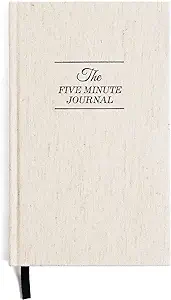
Gratitude Journal Prompts Mindfulness Journal Prompts Journal Prompts for Anxiety Reflective Journal Prompts Healing Journal Prompts Cognitive Behavioral Therapy Journal Prompts Mental Health Journal Prompts ASMR Journal Prompts Manifestation Journal Prompts Self-Care Journal Prompts Morning Journal Prompts Evening Journal Prompts Self-Improvement Journal Prompts Creative Writing Journal Prompts Dream Journal Prompts Relationship Journal Prompts "What If" Journal Prompts New Year Journal Prompts Shadow Work Journal Prompts Journal Prompts for Overcoming Fear Journal Prompts for Dealing with Loss Journal Prompts for Discerning and Decision Making Travel Journal Prompts Fun Journal Prompts
Enriching Creative Writing Activities for Kids
You may also like, famous diaries: the 10 most famous published diaries.
How to Use a Planner to Stay Organized and Get More Done
Morning routines: secrets to success, leave a reply cancel reply.
Save my name, email, and website in this browser for the next time I comment.
- Productivity
- Favorite Journals
How to Effectively Teach Creative Writing in Elementary
Today let’s discuss how to effectively teach creative writing at the elementary level. Creative writing is such an important writing skill to teach students from a young age. Young writers need to understand the concept of creative writing as using their imagination to express themselves freely through words.
It’s not just about proper grammar and spelling (though those are important too!) , but rather about sparking their creativity , allowing them to dream up unique characters , exciting adventures, and incredible worlds. By nurturing their storytelling abilities early on, we’re not just helping them become better writers, but also fostering their confidence, encouraging self-expression, and igniting a lifelong love for writing. So, let’s dive into some strategies and tips to make your creative writing lesson plans a hit in your elementary classroom!

What is Creative Writing?
Creative writing is essentially writing in which the author uses his or her imagination to create a story. Creative writing in simple terms refers to the process of expressing thoughts, ideas and stories in a unique and imaginative way.
It’s about letting children’s minds wander freely, encouraging them to use their imagination to create characters, settings, and plots. Creative writing isn’t just about grammar and spelling; it’s about fostering a love for storytelling, allowing kids to explore their creativity, and helping them find their voice through words on paper. It’s a journey that encourages self-expression, builds confidence, and nurtures a lifelong appreciation for writing. The whole purpose of creative writing is to think outside the box and stray from traditional structures and norms.
Creative writing falls under one of the 5 categories of writing but it also combines a lot of these styles together:
- Narrative Writing
- Descriptive Writing
- Persuasive Writing
- Expository Writing
- Creative Writing
Creative Writing Lesson Plans Don’t Have to Be Difficult
Finding creative ways for students to write using their imaginations doesn’t have to be difficult. No matter the grade level, creative writing lessons should offer plenty of opportunities for students to tell their point of view on a subject. Don’t let creating lesson plans for creative writing be a headache! It’s all about giving kids the chance to let loose and share their thoughts in their own special way.
Whether they’re in 2nd grade, 3rd grade, or 5th grade, the key is to let their imagination run wild. Get them talking about what interests them, throw in some fun prompts, and watch the magic happen! Mix things up with different writing styles – stories, poems, even real-life tales. Make it a safe space where they feel free to jot down whatever comes to mind. By balancing a bit of structure with loads of creative freedom, teaching creative writing becomes a blast for both the teachers and the students!

Here’s How to Teach a Creative Writing Activity to Elementary Students:
1. start with creative writing prompts.
One of the first activities you can try is using writing prompts with students. Writing prompts are a great tool to get students’ brain juices flowing, no matter if they are elementary, middle school, or high school students! Coming up with writing topics for younger students can be especially challenging sometimes.
Inside the How to Write a Paragraph Year-Long Bundle there are specific writing prompts that are scaffolded and differentiated to meet all learner’s needs. You will find everything you need inside this resource to help your students who struggle with writing understand how to write a paragraph all YEAR LONG … trust us! It allows for easy planning for your writing lessons because it’s got different seasonal writing resources and prompts inside no matter what time of year it is. These are the perfect place to start to get your students writing based on themes.
Once they are comfortable in this category, then it’s time to actually get them to come up with some of their own ideas to write about now (after all that is the ENTIRE point of a creative writing lesson!)
Try with these juicy writing prompts below to help get your student’s creativity flowing if they need help coming up with a topic to write about :
- Personal memories: “Tell about someone who taught you something really important.”
- Imaginative scenarios: “Let’s create a wild story set in a world where anything goes!”
- Prompts based on a familiar mentor text: “What if your favorite book ended differently? Give it a new twist!”
- Lead-in sentences: “I saw myself in the mirror and couldn’t believe what I saw. Overnight, I…”
- Fascinating or thought-provoking images with a directive: “Who do you think calls this log cabin home? Tell us their story and what they’re up to!”
2. Break Down the Prompts Together
Do NOT rush this next step! We need to make sure our students are coming up with unique and creative writing ideas. During this first week’s lesson plan, you want to make sure students know exactly what they are getting themselves into with the creative writing process. Make it known that these prompts above are to help guide them and their imagination. Help to break down what each prompt is asking/ looking for:
For example, if the prompt says “I saw myself in the mirror and couldn’t believe what I saw. Overnight, I…,” then what questions should the students be asking?
Hopefully, they will tell you they want to know what they look like in the mirror right now.
Then you can have students think of 5 possible situations for what happened and how they look.
3. Do a 5 Minute “Free Write Brain Dump”
During the next step of a creative writing lesson plan, encourage students to do a brain dump in their writing journals on all of their prior knowledge on the subject that they will be writing about. This lets you know a couple of things as the teacher: Do they have their own experience on this topic and enough background knowledge? Does the subject areas that they are free-writing about make sense for the creative writing topic? This should only take about 5 minutes and you are NOT worried about spelling or grammar during this step.
For example: if they are planning to write about the solar system but they don’t have much to say during this free write brain dump, this is where you may want to incorporate a mini lesson or guided conference with you to make sure they are picking a topic that they have a lot of background knowledge about or can at least figure out where to find the answers they might need for their writing.
The “free write brain dump” is helpful for students to see a couple of things- okay I know enough information about this topic and am ready to organize my thoughts OR I had a hard time just coming up with random thoughts to write about…maybe I need a need a new topic. It will truly help decide their confidence factor for this assignment.

4. Start Your Planning Process
The next step in your creative writing unit should be having students take their decided-upon creative writing topic and organize their thoughts and ideas. This step is super important because you want the information to be in the students’ own writing but you also want to make sure they have a plan for how to get their point across. Your stronger writers may be ready to go but some may need a bit more structure set up to help them.
There are a couple of different ways they can organize their ideas:
Use Graphic Organizers
Graphic organizers are the perfect thing to use if students want to stick with a paragraph-type writing structure. For your lower writers, this might be the way to go because graphic organizers make planning a lot easier and the structure makes it super easy to follow. Graphic organizers also help break down the writing process into chunks so it doesn’t feel like such a difficult task to students who may struggle more with their writing skills or for ESL students.
Character Development Worksheets
Provide worksheets that prompt students to describe the characters in detail that they want in their story. Include sections for physical appearance, personality traits, motivations, and character arcs. This helps students develop well-rounded characters before they start writing.
Peer Brainstorming
Organize small group brainstorming sessions where students can share their ideas and receive feedback from their peers. This way can totally help students polish up their ideas and come up with fresh new ones for their creative writing.

Story Boarding
Encourage students to create a visual storyboard for their story. They can draw a series of pictures or scenes that outline the plot, helping them visualize the sequence of events in their narrative. We really love this idea for planning for students who are learning English as a second language and students who have more difficulties communicating their thoughts out loud.
Voice Recording
Finally, one last idea: If your students are feeling unsure about writing things down, suggest they talk it out and record their thoughts on a device such as a classroom iPad.
They might be amazed at how easily their spoken words turn into great written stuff on the page! This is another favorite of ours for those students who struggle with getting their thoughts on paper or are learning English as a second language.
During the planning phase , it is a good time to take the opportunity to do any mini lessons you feel needed with students on any of the skills above.
5. Write the Rough Draft
Next is taking the creative narrative and putting it into a rough draft version using their planning method. It’s time for them to start coming up with their own creative short story. Do they have a main character? Is there a problem and solution? Does the writing make sense? After the rough draft, it can be super beneficial to meet with students individually or in small groups to give feedback before they move forward on the final copy.
Word of advice: Don’t worry about spelling or grammar too much in the rough draft phase! Just help students get their thoughts out onto paper!
6. Time To Write the Final Draft
As the creative writing journey nears its conclusion, it’s time to guide your students toward the crucial phase of crafting their final drafts. This stage marks a shift towards independent work, where students take ownership of refining their narratives. Encourage them to enrich their stories with vibrant sensory details to help bring the writing to life.
This isn’t just about polishing; it’s about infusing their words with emotions and imagination. The final draft represents all of their hard work! Make sure you help them reach their fullest potential with their creative writing and storytelling skills!
A Final Word on Teaching Creative Writing to Elementary Students
When planning your creative writing lesson plans for the school year, it’s best to think about the overall entire writing process. For students that you KNOW creative writing will be a challenge for, take some time during English language arts sessions and work with them on the simple structures of writing to help build their confidence. If they struggle with the mechanics and confidence to write, they honestly may not be ready for the creative writing process just yet. Use the resource below to help them refine their writing skills so that all of your students can be a confident and creative writer!
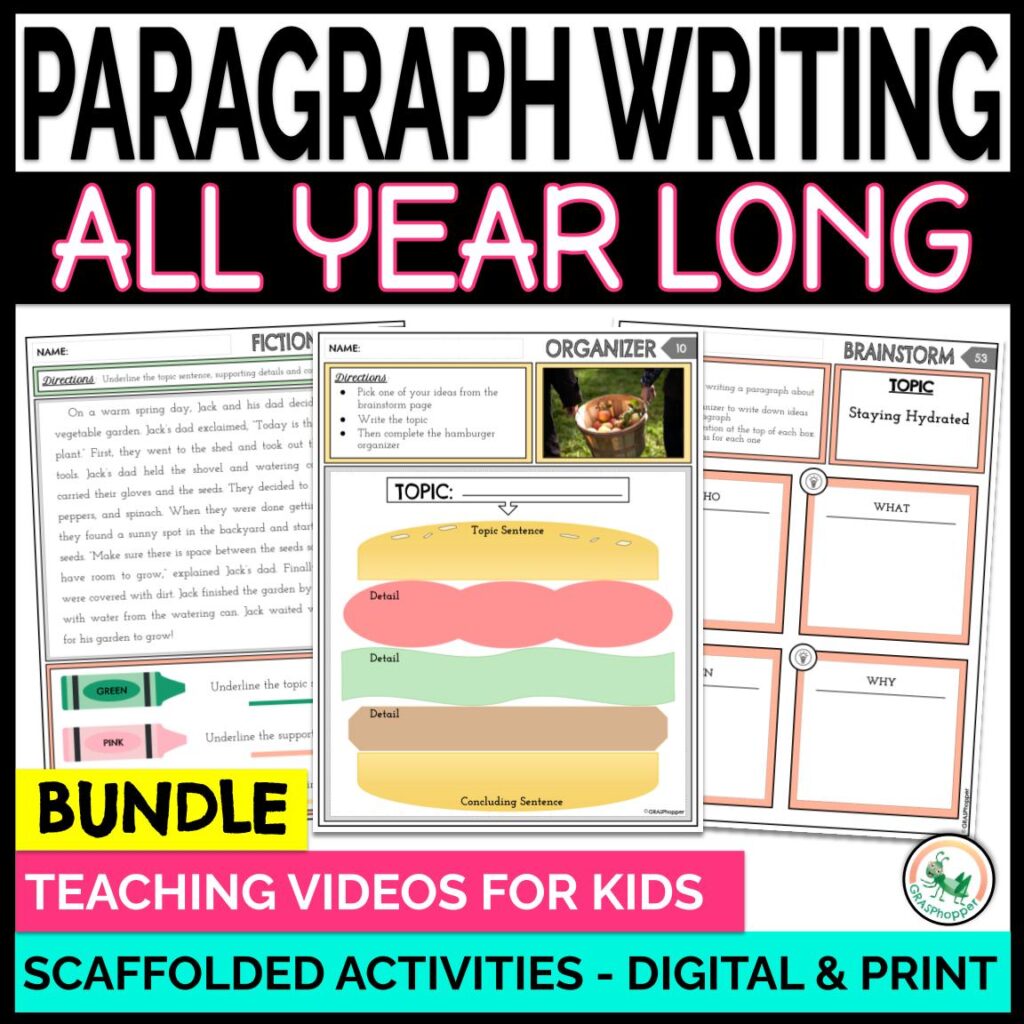
How do you feel about creative writing lesson plans?
You might also like:.
FREE Differentiated Creative Writing Prompts for Fall
Excuse our digital dust! We’re busy renovating this website to make it even more fabulous. Stay tuned!
- Read more about: Writing
You might also like...

A Teacher’s Guide on How to Annotate a Text: 4th, 5th & 6th Grade Students

The 2 Easy Ways to Teach Students to Fix Run-On Sentences


3 Simple Ways to Fix Sentence Fragments in Upper Elementary
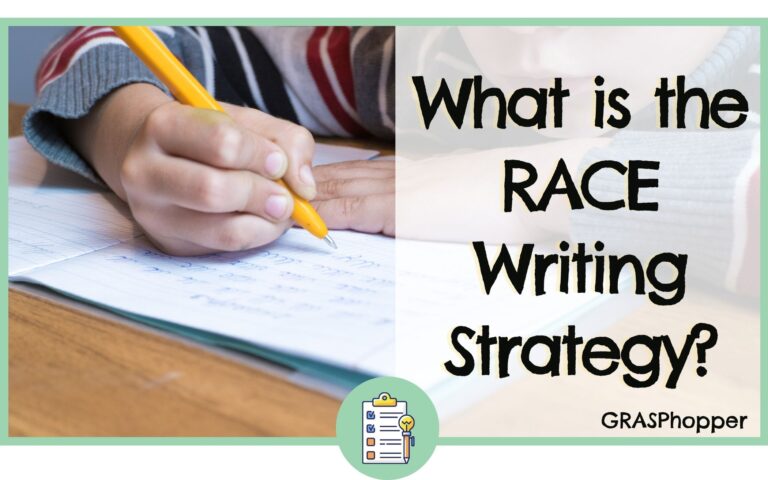
What is the RACE Writing Strategy?
Teach smarter, not harder join the newsletter.
Transform your teaching with our teaching tips, resources, and freebies delivered straight to your inbox!
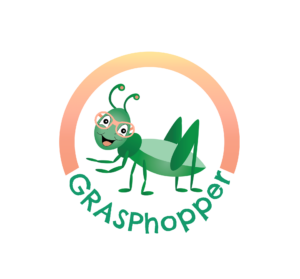
The Goodies
© GRASPhopper Learning • Website by KristenDoyle.co

Activity: Perform a poem
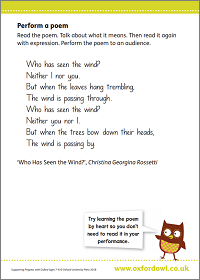
Read the poem, talk about what it means, and perform it to an audience.
5. Find story inspiration
You can find fun story ideas anywhere! Why not raid your kitchen cupboards or hunt through the attic to find lost treasures? Anything from an old hat to a telescope will do the trick. What could the object be used for? Who might be looking for it? What secrets could it hold? Suggest different genres such as mystery or science fiction and discuss how the item might be used in this kind of story.
Real-world facts can also be a great source of inspiration. For example, did you know a jumping flea can accelerate faster than a space rocket taking off into orbit? What crazy story can your child make out of this fact? Newspapers and news websites can be great for finding these sorts of ideas.
For more storytelling ideas, download our free Story idea generator or our Character profile activity sheet .
Activity: Story idea generator
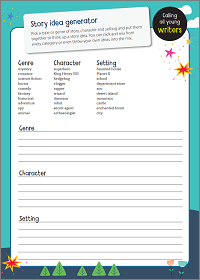
Activity: Character profile
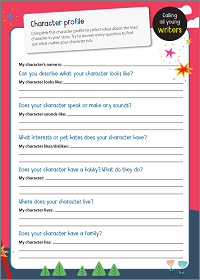
6. Draw your ideas first
If your child isn’t sure where to start with a story or even a piece of non-fiction, it can sometimes be helpful to sketch out their ideas first. For instance, can they draw a picture of a dastardly villain or a brave hero? How about a scary woodland or an enchanted castle?
Your child might also find it useful to draw maps or diagrams. What are all the different areas of their fantasy landscape called? How is the baddie’s base organised?
Some children might enjoy taking this idea a step further and drawing their own comics. This is great practice – it stretches your child’s creativity, gets them thinking about plot, character, and dialogue, and is a big confidence boost once they’ve finished and have an amazing story to look back on.
What your child will learn
In Year 6 (age 10–11), your child will be aiming to build upon the goals and expectations they were first set in Year 5. They will be expected to:
- Identifying the audience for and purpose of the writing
- Noting and developing initial ideas, drawing on reading and research where necessary.
- Selecting appropriate grammar and vocabulary, understanding how such choices can change and enhance meaning
- In narratives, describing settings, characters and atmosphere and integrating dialogue to convey character and advance the action
- Using a wide range of devices to build cohesion within and across paragraphs
- Using further organisational and presentational devices to structure text and to guide the reader (for example, headings, bullet points , and underlining).
- Assessing the effectiveness of their own and others’ writing
- Proposing changes to vocabulary, grammar and punctuation to enhance effects and clarify meaning
- Ensuring the consistent and correct use of tense throughout a piece of writing
- Ensuring correct subject and verb agreement when using singular and plural , distinguishing between the language of speech and writing and choosing the appropriate register.
- Proof-read for spelling and punctuation errors.
Handwriting, spelling, grammar, and punctuation are all important aspects of writing too. You can find out more about them on our dedicated pages:

Handwriting in Year 6 (age 10-11)
Find out more about handwriting in Year 6 at Primary School.
Find out more

Spelling in Year 6 (age 10-11)
Find out more about spelling in Year 6 at Primary School.

Grammar and punctuation in Year 6 (age 10-11)
Find out more about grammar and punctuation in Year 6 at Primary School.
- Age 5–6 (Year 1)
- Age 6–7 (Year 2)
- Age 7–8 (Year 3)
- Age 8–9 (Year 4)
- Age 9–10 (Year 5)
- Age 10–11 (Year 6)
- Year 1 (age 5–6)
- Year 2 (age 6–7)
- Year 3 (age 7–8)
- Year 4 (age 8–9)
- Year 5 (age 9–10)
- Year 6 (age 10–11)
- Grammar glossary
- Grammar books

Creative Writing for Kids: A Step-By-Step Guide to Writing a Story

Creative writing can be a real positive force for children’s lives and development, but how does a child get started with creative writing? There are many ways, but it can often be helpful to have a structure to work from, so we’ve outlined some simple steps on how your child can write a story and enjoy themselves in the process! As they brainstorm, a lot of ideas will come to mind, so we recommend they take notes throughout the process.
What is creative writing?
Creative writing is an expressive form of writing that allows children to explore their thoughts, ideas, and emotions in an imaginative way. Unlike academic or factual writing , creative writing encourages children to use their imagination to invent characters , settings , and plots , fostering a love for storytelling and self-expression.
In creative writing, children have the freedom to write stories , poems , letters , and even scripts for their own movies. It's an opportunity for them to unleash their creativity, experiment with language, and develop their unique voice as writers. Through creative writing, children learn to think critically, problem-solve, and communicate effectively, all while having fun and exploring their creativity.
Encouraging creative writing at home or as part of homeschooling not only helps children develop their writing skills but also nurtures their imagination and confidence.
Getting started

Your child may not be quite ready to start, and that’s normal - writing can be challenging!
Instead of jumping straight in, ease your child into it with activities like free writing. This will allow them to explore any topic without pressure, acting as a way to boost your child’s imagination before they start writing stories .
If your child is a reluctant writer, you can try different methods that don’t actively require them to put pen to paper, but are linked to creativity and storytelling. These include drawing , picking out new children’s books from the local library, telling stories out loud, or dedicating time to read your child’s favorite books as a family. Generally, reading lays the foundation for your child to be able to create their own stories, improving their narrative writing skills by exposing them to different techniques, genres, and styles.
When all else fails, encourage your child to read more. The more that your child reads, the easier it will be for them to start writing.
Step 1: Character development
Creating a character is a great starting point for your child to write their own story.
This character can be whatever your child wants them to be. They can be a human, an animal, a mystical creature, or something completely made-up! Once they have a general idea of what they want this character to be, they can brainstorm different plot points, which will further inform the characters traits, behaviours, and role in the story.
Here are some questions your child should be able to answer about their character:
- What is going on in this character’s life?
- Do they have a problem that they need to fix?
- Who are they interacting with in this story?
- How do they feel about other characters, and about the issue at hand?
A story normally relies on one character to be the hero, and on another to be the villain. The villain is typically portrayed as a negative character who introduces a problem (the antagonist), and the hero is a positive character who solves the problems (the protagonist). Once your child creates their main character, they should establish their role within the story. Are they writing from the perspective of the hero, or would they prefer to give the villain of the story a voice?
From there, they can create side characters! These are typically parents, siblings, and friends of the main character, but can also be total strangers. If your child is stuck on how to build their first character, they can use writing prompts to make it a little easier. Try this prompt:
Prompt: Create a character that is half dog, and half elephant and call it a Doggophant! What does a Doggophant like to eat?
Step 2: Setting and genre
The next step in your child’s creative writing process is to choose where it takes place . They should also decide the genre of their story, as some settings won’t work for some specific genres (for example, a sunny beach wouldn’t pair well with a moody mystery).
This story’s setting could be a real location, such as London, Paris, or New York, or a fictional location, like an enchanted forest or an underwater kingdom.
A helpful way to start brainstorming is to ask your child about places they’ve been to, seen on TV, or read about in stories. This is a chance for them to imagine how their story would look like in different settings, and will help them decide on the genre they’d like to go for too.
Prompt (continued): Where does a Doggophant usually live? Is it a magical Night Zoo?
Step 3: Structure and plot
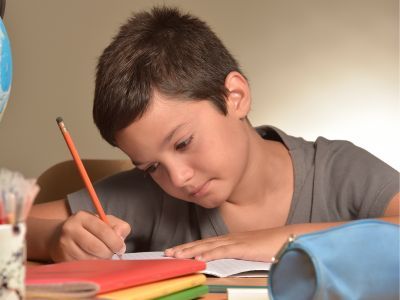
Before starting to plan the plot, your child should understand the basic structure of a story . All good stories have a beginning, a middle, and an end.
The beginning serves as a way to introduce characters, set the scene, and show the "calm before the storm”. This happens before a conflict is introduced.
The middle of a story is where most of the action takes place. This is where your child should introduce the main problem, and the main character’s journey of trying to solve it.
Finally, the ending or conclusion of the story is where, normally, the conflict is resolved. This can change depending on how your child wants to end their story!
Prompt (continued): Doggophants love when people visit the Night Zoo, but a new character named Lord Nulth is trying to steal all of the creativity in the Zoo! Does Lord Nulth sound like a nice person? Why would he want to steal creativity? How will Doggophant and other animals stop him?
Step 4: Begin Writing
Now that all the planning is done, let’s get writing!
As your child starts to write, they’ll probably make changes and come up with new story ideas— this is normal and an integral part of the creative process.
It’s important that you offer your support throughout this process, especially if your child is a reluctant writer. While giving them space to concentrate, you can check-in every once in a while, offering help if they encounter any hurdles. Your role mirrors that of a writing prompt, providing your child with initial ideas and nudging them to develop their story further. This collaborative approach ensures their story unfolds organically, making the blank page a canvas for unlimited story possibilities!
Step 5: Keep Going!

One of the best things about creative writing is that it enables children to express themselves and grow in confidence with every story they craft. It pushes children to believe in the phrase "I can", as they embark on different writing exercises without the fear of failing or being held by the “what if’s”. As your child starts their journey through the exciting world of writing, it’s important to guide them in the right direction. Encourage them to not overthink and just write whatever comes to mind at first.
To keep the momentum, you can even set different goals, like writing different descriptions, drawing their main character, or brainstorming different story endings before writing the full story. For reluctant writers, setting small, attainable targets can make the process less overwhelming and more exciting. Avoid setting strict word counts or time limits, as these can add pressure and take the fun out of the writing experience.
It’s important to remember that progress isn’t linear, and that every child is unique. If they need to, you can allow your child to build their story gradually, creating a more fluid project that enables them to work when inspiration strikes. Once they finish their first story, you’ll probably see a change in their attitude, and a new motivation to write a different piece.
Creative writing can be a rewarding experience for you and your child. Make sure you give them positive encouragement, and to soak in the experience of reading the story once it has been completed. They’ll have created something one-of-a-kind, and it will give you an exciting look into their imagination!
Step 6: Try Night Zookeeper

Still having trouble getting your child motivated to write? You should try Night Zookeeper !
Our writing program for kids makes writing fantastically fun by turning different writing activities into games, keeping children engaged, entertained, and excited to learn! We cover all styles of writing, and boost children’s writing skills using an array of different activities, including writing lessons, short story prompts, and challenges.
More creative writing activities
- 25 Creative Writing Prompts For Kids
- Writing Activities For Kids
- Story Writing Resources
Follow us on social media

Make Reading & Writing Fantastically Fun!
- Award-winning reading & writing program for kids
- Improves spelling, grammar, punctuation & vocabulary
- Over 1,000 different learning games and activities

“My child hates writing.” What do I do?

How To Get Your Child To Love Writing

8 Fantastically Fun Writing Games For Kids

- Primary Hub
- Art & Design
- Design & Technology
- Health & Wellbeing
- Secondary Hub
- Citizenship
- Primary CPD
- Secondary CPD
- Book Awards
- All Products
- Primary Products
- Secondary Products
- School Trips
- Trip Directory
- Trips by Subject
- Trips by Type
- Trips by Region
- Submit a Trip Venue
Trending stories

Top results

- Creative Writing Ideas How To Club
Creative writing – How to nurture your young authors

Get pupils into the scribbling spirit with these ideas for the classroom and after-school clubs…

Get children excited about creative writing and use it to get to know your students better with this advice from teachers and education experts…
Use creative writing to get to know your pupils
How to run your own creative writing club, creative writing year 6 project.
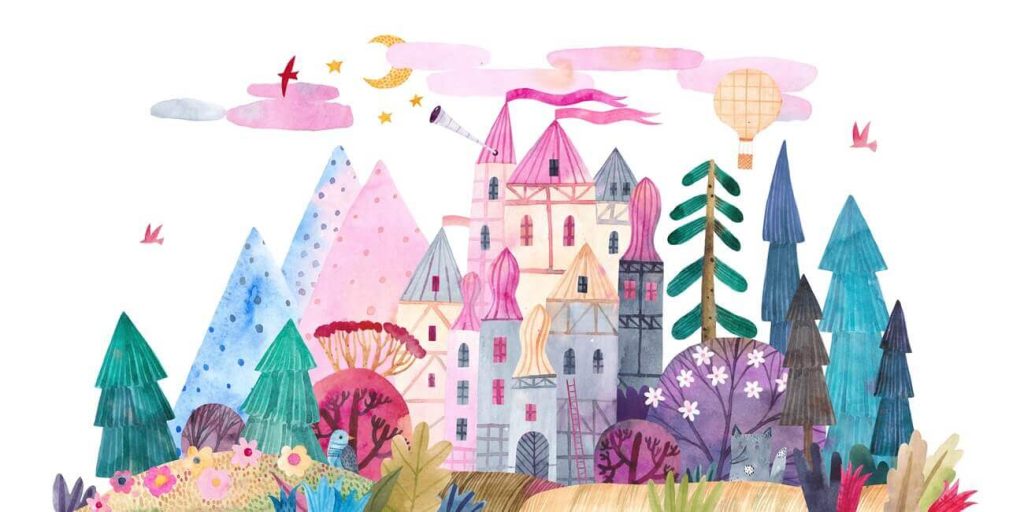
Want to learn more about your class? Just let them write, says teacher Simon Hunt…
It’s remarkable what you can discover as a teacher when children have the freedom to express themselves in their writing.
At the beginning of term, I use creative writing to understand where a child is academically and to help me get to know all the children in my class.
Why not just give them a test, you ask? Well, you can learn a surprising amount about a child from a piece of their creative writing.
Interests and passions
The choice of topics and themes in their writing can unveil children’s interests and passions, which is an incredibly valuable thing to know. Whether it’s street dance, football or dogs, you can use this knowledge to help spark their interest in maths, science, or any other subject by tailoring examples to suit them.
Emotional expression
Creative writing also provides an avenue for children to express their emotions and thoughts, which will allow you to understand more about their feelings and concerns. It can unveil a child’s depth of insight and emotional intelligence that they may be hesitant to express verbally. This will really help you choose the right support for them through the school year.
Confidence and oracy
Reading aloud is an important part of writing stories, as it gives children the opportunity to practise their oracy skills: pitch, tone, and intonation. And, vitally, hearing them read out loud will allow you to baseline their reading fluency. Presenting their writing to an audience can be very intimidating though, so should be handled sensitively.
Some children naturally have quieter voices and may avoid volunteering to read aloud, as they are aware that not everyone can hear them. In class, we have a pass-around microphone that children use when reading.
The microphone is connected to a speaker, meaning that everyone can hear them. The simple act of holding the microphone can significantly impact a child’s focus when reading aloud – often serving as a sort of comfort blanket, boosting their confidence.
Ultimately, the important thing to note is that stories are meant to be read and heard, and anything we can do to encourage that nurtures children’s literary and communication skills.
Imagination and creativity
Creative writing reveals a child’s imaginative abilities, giving insights into their capacity for original thinking and storytelling. It can be surprising to see the children that excel at this and can help to highlight an aspect of a child’s personality that might otherwise not have come to light until later in the term.
How to make it work
If we want children to be excited about creative writing, we have to be too, so think about how you introduce the lesson.
I often begin by telling my new class about how I felt about writing as a child. I loved reading books, but I struggled at school with spelling and grammar (in fact I still do).
Sharing how creative writing helped me overcome my fear of writing allows me to explain how I realised that what was important was the imagination and creativity I could bring to my story.
As a published children’s author, I show them the books I’ve written and connect them back to what I learnt at school. I hope this helps them to overcome their worries about spelling and grammar – I’ve found post pandemic that more children feel anxious about ‘getting things wrong’.
Of course SPAG is still incredibly important but in creative writing I really want them to tell me a good story.
There are so many ways to understand the children in your class and what makes them tick and, as teachers, we’re attuned to gathering this information from day one. However, I think creative writing is one of the best because it gives us the basics but also tells us so much more about the child.
Simon Hunt is a Year 3 & 4 teacher at an inclusive school in Greater Manchester and education consultant for 500 Words 2023, the UK’s most successful children’s story writing competition hosted on BBC Teach. He also advises on 500 Words Live Lesson, which you can watch online .
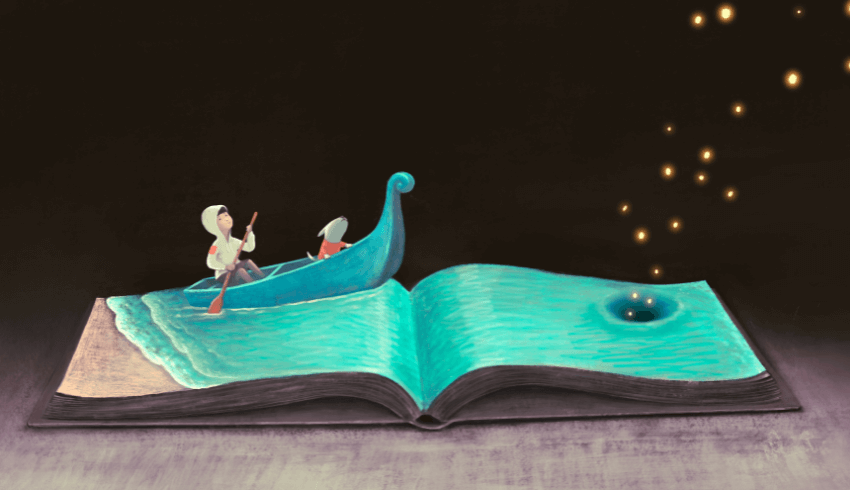
Would you rather fly, or be invisible? Explore endless impossibilities and get pupils into the scribbling spirit with these ideas…
If you could wish for one thing, knowing that it would definitely come true, what would it be? A million pounds? To fly? Talk to animals? Live in a tree house? Travel the world at the click of a finger?
I’ve asked this question hundreds of times to thousands of pupils, and their answers are always imaginative, normally well thought-out, and quite often, impossible .
I then follow it up with the question, “What if you could experience that thing right here, right now?” Cue eyes widening, ears pricking and backs straightening. “All you need is… a pencil.”
Creative writing club
Before becoming an author, I ran creative writing clubs in 30 schools a week for almost a decade. I hired over 100 tutors, won some awards, teamed up with publishers to arrange author events, and even had requests from teachers in Europe, Dubai and Australia asking to launch a writing club in their schools.
There were long waiting lists in almost every setting, and teachers, parents and librarians would ask on a weekly basis, “How have you turned that reluctant reader/writer into someone that actually wants to do more writing after school?”
Just another writer
The secret? First and foremost, I planned workshops that were FUN. I knew if I enjoyed running them, pupils would enjoy taking part.
I was just another writer in the room who talked about the books I was reading, collaborated on ideas, and asked for feedback on stories in the same way they asked me.
At this point I wasn’t a published author – just someone that loved to invent characters and write about fantastical, magical worlds.
I wrote alongside the students, making mistakes, scribbling over anything I didn’t like, and asking for help whenever I got stuck.
Everyone knew this was just ‘rough’ work. There was no pressure. No marking. No tests. And we didn’t have to share our ideas if we didn’t want to.
Jumping-off points
I genuinely looked forward to every single workshop I ran, and I know the students felt the same when they came racing into the classroom and didn’t want to leave at the end (yes, even the ones who ‘hated’ writing to begin with!).
Of course, I couldn’t rely on pupils simply coming up with new ideas each week for enjoyment. I had to provide them with inspiration, jumping-off points, and exciting writing hooks, too.
For this, I turned to the experts – children’s authors. I chose five ‘Authors of the Term’ that I knew would enthuse and inspire the students, and designed workshops around their books.
This was always a fun part of the process – I looked for books that had wide appeal, simple concepts, and an excitable element that made my inner child say ‘ oooh!’. Here are a few examples . . .
Writing for pleasure
I used Abi Elphinstone’s Rumblestar to write fast-paced adventure stories. We plotted our adventures on maps, devised the main action in ‘cloud planners’, and focused on exciting ‘world-crossing moments’ to start our stories.
At Halloween, I chose books like Guy Bass’ Stitch Head and Joseph Coelho’s Zombierella , and ended each workshop with a spooky storytelling session where we turned off the lights, closed the blinds, and sat on the floor as if we were gathered around a campfire!
The most successful workshops were the simplest. I used L.D. Lapinski’s Strangeworlds series and copied what happened to the protagonist when she jumped inside a suitcase and travelled to another world.
Pupils planned their new setting, focused on the five senses, and described the first thing they noticed when they arrived.
Their stories were thrilling, fast-paced, hugely descriptive, and completely individual, because they had the freedom to take their ideas in any direction they chose.
I normally scheduled two sessions around each book – the first session involved planning and starting stories (or poems / diary entries / letters, etc), and the second session involved extending, improving, or continuing them.
I also added one ‘paint a picture’ session (using images for inspiration) and ‘free writing’ at the end of each term to give pupils a chance to finish their favourite piece of work.
Remember, if you want to boost writing for pleasure, pupils should know that they can write about anything. Nothing is off limits, impossible or ‘wrong’.
And if you’re not sure how to start your first session, why not ask your pupils that if there was one thing they could wish for, knowing that it would definitely come true… what would it be?
Creative writing activities
1) distraction.
Beware: pupils love this game so much, they might ask to play it every week! The idea is simple. Children write for 10 minutes, in silence, and if they speak / laugh / stop writing for an extended period of time, they get a ‘strike’.
If a table gets three strikes, they risk not being allowed to read their work out. The twist? It’s your job to distract them!
Shake tables and shout ‘EARTHQUAAAAKE!’, steal their pens, use rulers as drumsticks, play songs they’ll want to sing along to, bust out the YMCA and get caught by a bemused headteacher.
Between the giggling and dancing in their seats, pupils will write so much in these 10 minutes, and it’s a great way to get them writing without overthinking.
2) Where am I?
Give students a setting (e.g. a library / the moon / horse stables / a rocket ship) and challenge them to describe it without saying where it is.
They should focus on the five senses. They must give at least three clues before the class can guess where it is, and the person who guesses correctly gets the next go.
The winner is the person who gets the most correct answers or the person that comes up with your favourite description.
3) Five-minute challenge
Tell pupils that most adults can write two lines in one minute, and then challenge them to write 10 lines in five!
Give constant time reminders, walk around the room shouting out ideas or words of encouragement, and watch their competitiveness soar.
This is a great game to play if, like me, you spend most of the lesson talking about books and story ideas, and realise there’s not much writing time left!
4) One-word game
This game is a great way to warm up imaginations at the start of a workshop. Ask pupils to stand behind their chairs and give them an opening line such as, ‘I was walking through the haunted castle when . . .’.
Walk (actually, it’s more of a run) around the room, pointing at each pupil in turn, and asking them to add one word to the story.
It must make sense and they have three seconds to answer. If they can’t think of a word, if it doesn’t make sense, or if they take too long, they are out and must sit down.
The winner is the last person standing. Note: when they get really good, try introducing a one-second hesitation rule – it’s hilarious!
5) What’s your problem?
Remind students that every story needs a problem to make it exciting.
Then ask them to stand behind their chairs and each give one problem like, ‘aliens invaded Earth’ or ‘I broke a fingernail’.
Problems can be big or small, but they must give an answer in three seconds, and they can’t repeat anything that’s already been said. The winner is the last person standing.
Mel Taylor-Bessent is the author of The Christmas Carrolls and the director of the award-winning educational website, Authorfy . See more of Mel’s work at meltaylorbessent.com . Browse more creative writing prompts .
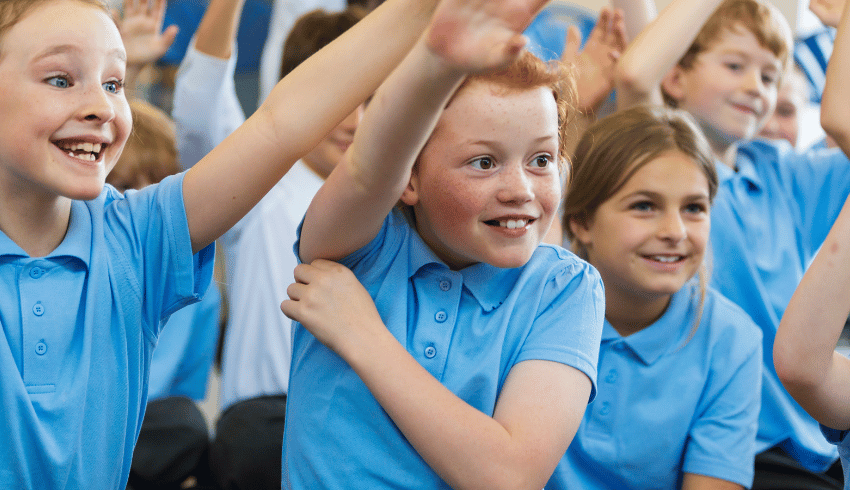
Combine twisting tongues and paperback publishing to produce an exciting writing project that allows pupils to make their very own book …
Have you ever tried to get your class excited about a writing exercise, only for them to pipe up with “But what’s the point?”.
We’ve all been there, and it can be incredibly frustrating when you don’t have an answer lined up.
Well, with this project, the outcome is both evident and impressive!
As part of a workshop, we decided to show children the amazing process of publishing, while adding in some humour, and – of course – essential literacy skills…
We visited Helen and her Y6 class for a morning, and explained to the children that we would do some writing that would lead to the publication of their very own paperback book.
We’d act as their agents, editors and publisher; they would have full control over all other aspects of the process.
The class settled on tongue twisters as our subject, and began by inviting children to try out some old favourites.
After much twisting of tongues and accompanying laughter, we showed the children probably the best-known English example: the one featuring Peter Piper. Most knew the first line but didn’t know there were three more:
Peter Piper picked a peck of pickled pepper.
A peck of pickled peppers Peter Piper picked.
If Peter Piper picked a peck of pickled peppers,
Where’s the peck of pickled peppers Peter Piper picked?
We challenged the class to compose 26 brand-new twisters, each following the alliteration pattern of that original but finding their own vocabulary.
Dictionary skills
Helen organised the class into pairs or threes, and each group was given two letters of the alphabet to work on, ensuring no group got two of the trickier letters.
Armed with dictionaries, the children got to work, and by breaktime had produced some impressively inventive twisters.
Here’s an example, cleverly coping with one particularly difficult letter:
Xavier Xmas x-rayed an extra-terrestrial xylophone.
An extra-terrestrial xylophone Xavier Xmas x-rayed.
If Xavier Xmas x-rayed an extra-terrestrial xylophone,
Where’s the extra-terrestrial xylophone Xavier Xmas x-rayed?
Although writing was the focus of the project, there were clear opportunities throughout for lots of worthwhile speaking and listening, too.
The pupils engaged in planning their tongue-twisters, and shared drafts in small groups.
Next, the groups came together to swap ideas and ask for opinions, and, finally, children read aloud their contributions and again asked for feedback.
Reading comprehension KS2
As the children worked, they giggled a lot, but the seriousness and concentration they brought to the task was impressive throughout.
The talk was easily focused, because, in National Curriculum terms, pupils were ‘discussing writing similar to that which they [were] planning to write’.
There was also a clear need for writers to read the original text very carefully, which was built into their discussion and planning for their own verses.
This focus was nicely balanced by the eager and sustained use of dictionaries and the need for creativity in their word-hunting, showing their ‘enjoyment and understanding of language, especially vocabulary’.
Throughout, the process was always collaborative; writers understood they were working towards a shared, larger whole, and to tight deadlines, with a clear need for some ‘speedy writing’!
Once drafts were complete, all the children had to do some editing, and lots of proofreading.
Paperback publishing
After breaktime, we explained that once we were gone, they, the writers, would be in charge. All 26 twisters must be typed up and emailed to us by the end of the week. For the book, they must write a blurb and an introduction, and choose a title.
We explained how easy and low-cost it is to self-publish; the only cost came with the ordering of actual copies and so they must settle on a price per copy and crucially decide how many they would like to order (sneaking in a bit of economics!).
The children listened with real attention to all this and asked a good number of questions after, showing a remarkably mature commitment to the task.
Helen reported that the children very much liked the novel approach to writing.
They enjoyed their shared creativity and loved being entrepreneurs, relishing the involvement and control they had over the tasks, the decision-making, and the purpose.
For that short time, they had turned their classroom into a genuine publishing house and experienced purposeful writing for a real-world outcome – we won’t soon forget the looks on their faces when they saw their books for the first time.
David Horner was a writer-in-schools for over twenty years. Mike Jackson is a former primary school headteacher.
Sign up to our newsletter
You'll also receive regular updates from Teachwire with free lesson plans, great new teaching ideas, offers and more. (You can unsubscribe at any time.)
Which sectors are you interested in?
Early Years
Thank you for signing up to our emails!
You might also be interested in...

Why join Teachwire?
Get what you need to become a better teacher with unlimited access to exclusive free classroom resources and expert CPD downloads.
Exclusive classroom resource downloads
Free worksheets and lesson plans
CPD downloads, written by experts
Resource packs to supercharge your planning
Special web-only magazine editions
Educational podcasts & resources
Access to free literacy webinars
Newsletters and offers
Create free account
By signing up you agree to our terms and conditions and privacy policy .
Already have an account? Log in here
Thanks, you're almost there
To help us show you teaching resources, downloads and more you’ll love, complete your profile below.
Welcome to Teachwire!
Set up your account.
Lorem ipsum dolor sit amet consectetur adipisicing elit. Commodi nulla quos inventore beatae tenetur.
I would like to receive regular updates from Teachwire with free lesson plans, great new teaching ideas, offers and more. (You can unsubscribe at any time.)
Log in to Teachwire
Not registered with Teachwire? Sign up for free
Reset Password
Remembered your password? Login here


IMAGES
VIDEO
COMMENTS
We've outlined a seven-step method that will scaffold your students through each phase of the creative process from idea generation through to final edits. 7. Create inspiring and original prompts. Use the following formats to generate prompts that get students inspired: personal memories ("Write about a person who taught you an important ...
A Step-by-Step Guide for ParentsStep 1: Creative Writing at Word Level. In year 6, your child will continue to explore different word classes, such as adjectives (describing words), adverbs (where, when and how the action is happening), nouns (naming words) pronouns (words that stand in place of a noun) and prepositions (words used to describe ...
This step-by-step explanation to KS2 creative writing can help you support your Year 6 child's learning at home. The subject of Creative Writing is broken down into manageable chunks, providing you with a simple guide to follow when exploring creative writing together, either as part of homework or if you decide to give your child some extra support. This guide is based on the national ...
3. Avoid teaching a story "formula.". One of the most important things to remember when teaching creative writing is to dispense with the idea that stories should follow certain arcs or formulas. While formulaic writing can aid students who need direction, it can also bind students and limit their imaginations.
1. Creative writing fosters creativity and imagination. It encourages you to think outside the box, broaden your perspective, and explore new ideas. It also enhances your ability to communicate effectively, as it involves conveying thoughts, emotions, and narratives in a clear and compelling manner. 2.
Hopefully, they will tell you they want to know what they look like in the mirror right now. Then you can have students think of 5 possible situations for what happened and how they look. 3. Do a 5 Minute "Free Write Brain Dump". During the next step of a creative writing lesson plan, encourage students to do a brain dump in their writing ...
Step 4c: Choose your perspective. You have three choices when choosing the perspective your story is narrated from: First-person: Events are told from a character's perspective. the narrator uses "I", "me", and "we" to describe their actions. Second-person: Events are told from the reader's perspective.
Use These Independent Writing Activities for Year 6 PDF Resources. Creative writing is an extremely important activity for children to do. It's an exercise that helps pupils to practise almost any aspect of English that's taught in school. Whether it's spelling and grammar, contractions, tenses or perspectives, independent writing helps ...
Use These Independent Writing Activities for Year 6 PDF Resources. Creative writing is an extremely important activity for children to do. It's an exercise that helps pupils to practise almost any aspect of English that's taught in school. Whether it's spelling and grammar, contractions, tenses or perspectives, independent writing helps ...
What your child will learn. In Year 6 (age 10-11), your child will be aiming to build upon the goals and expectations they were first set in Year 5. They will be expected to: Plan their writing by: Identifying the audience for and purpose of the writing. Noting and developing initial ideas, drawing on reading and research where necessary.
Explore more than 89 "Creative Writing Year 6" resources for teachers, parents and pupils as well as related resources on "Year 6 Creative Writing". Instant access to inspirational lesson plans, schemes of work, assessment, interactive activities, resource packs, PowerPoints, teaching ideas at Twinkl!
Use These Independent Writing Activities for Year 6 PDF Resources. Creative writing is an extremely important activity for children to do. It's an exercise that helps pupils to practise almost any aspect of English that's taught in school. Whether it's spelling and grammar, contractions, tenses or perspectives, independent writing helps ...
A Step-by-Step Guide for ParentsStep 1: Creative Writing at Word Level. In year 6, your child will continue to explore different word classes, such as adjectives (describing words), adverbs (where, when and how the action is happening), nouns (naming words) pronouns (words that stand in place of a noun) and prepositions (words used to describe ...
89 Top "Creative Writing Year 6" Teaching Resources curated for you. 11 Plus Practice Writing Task Activity Mat Pack . 33 reviews . KS2 Tell Me a Story Inspiration Activity Pack . 68 reviews . Finish It! Writing Activity Sheets (Set 1) 67 reviews ...
Provide a way for students to celebrate their writing. Host an "open mic" for parents or other classes. Have students create a book of their work. That is super easy to do with a binding machine. Students can create their own cover and even create a dedication page. Hold a day of sharing for just your class.
Step 1: Character development. Creating a character is a great starting point for your child to write their own story. This character can be whatever your child wants them to be. They can be a human, an animal, a mystical creature, or something completely made-up! Once they have a general idea of what they want this character to be, they can ...
However, I think creative writing is one of the best because it gives us the basics but also tells us so much more about the child. Simon Hunt is a Year 3 & 4 teacher at an inclusive school in Greater Manchester and education consultant for 500 Words 2023, the UK's most successful children's story writing competition hosted on BBC Teach.
Creative writing can help children improve their language and literacy skills in a number of ways. Building vocabulary: As children tell their stories and write poetry, they will be exposed to new words and phrases. It is an easy way to expand vocabulary and improve their understanding of word meanings.